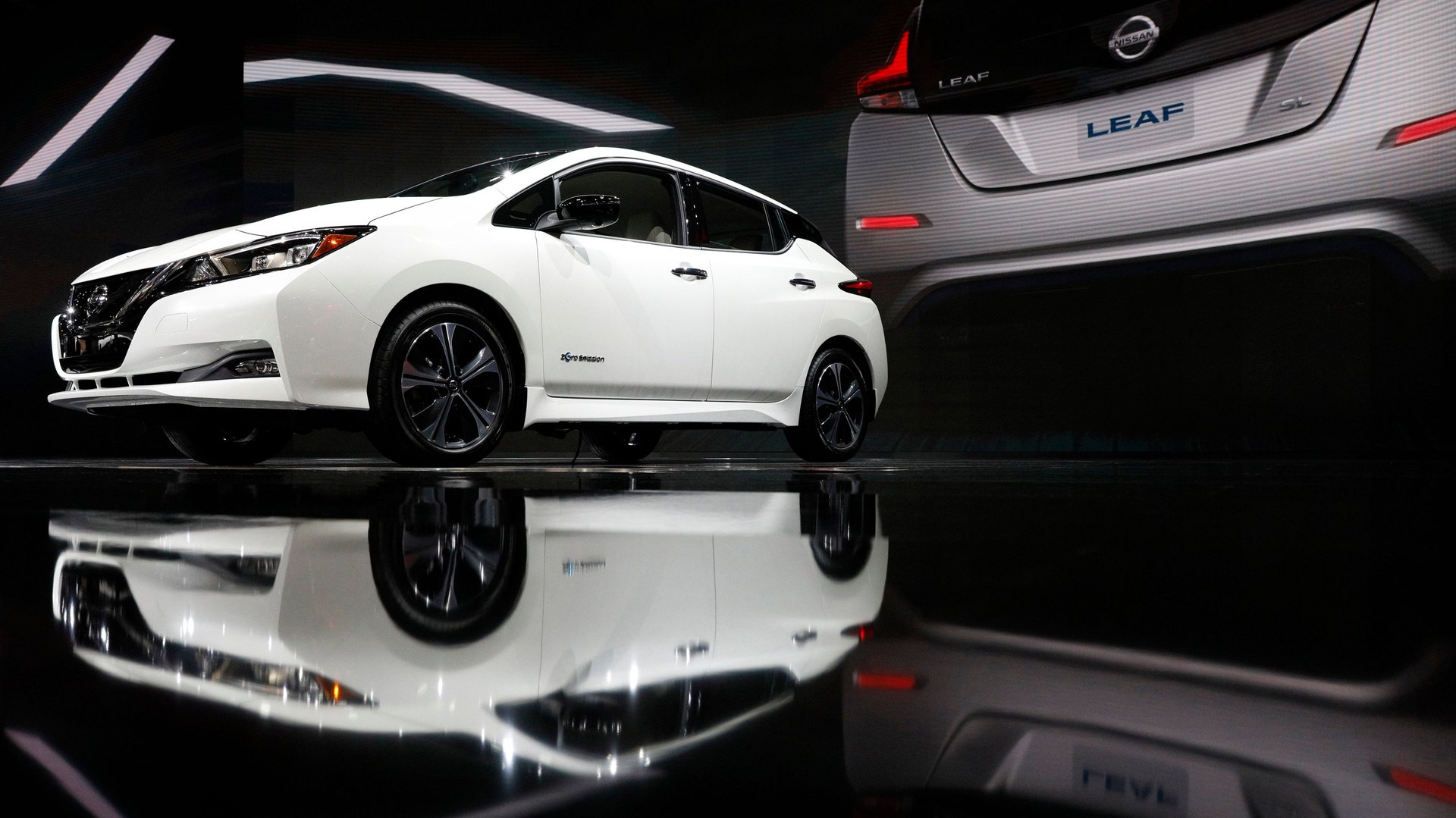Tesla’s Model 3 dominates US electric cars sales. The Nissan Leaf is winning around the world
It’s hard to beat the Model 3. Tesla’s latest flagship vehicle has dominated the US electric vehicle (EV) market since its debut in 2017. It has racked up more than 190,000 sales in the US, according to IHS Markit, and it captured 67% of the market for electric cars in the US last quarter.


It’s hard to beat the Model 3. Tesla’s latest flagship vehicle has dominated the US electric vehicle (EV) market since its debut in 2017. It has racked up more than 190,000 sales in the US, according to IHS Markit, and it captured 67% of the market for electric cars in the US last quarter.
That’s a first for an electric car maker. The Model 3, which secured more than 200,000 pre-orders within two days of being announced in 2016, is beating out conventional cars from BMW, Mercedes, and Audi. That’s given it a healthy lead over rivals such as the GM’s Chevy Bolt and the Nissan Leaf (on the market since 2010). While those EVs have enjoyed steady sales, Tesla delivered more Model 3s than the flagship EVs for GM and Nissan combined.
That’s given Tesla CEO Elon Musk a badly needed infusion of cash to keep Tesla solvent and help finance its next vehicle lines, from the Model Y crossover (essentially a hatchback version of the Model 3) to upcoming pickups and semi-trucks.
So has the Model 3 won the war for Tesla? Or is it just satisfying pent-up demand from Tesla fanatics seeking affordable alternatives to its luxury models?
Skeptics point to Tesla’s dismal deliveries numbers earlier this year as evidence that demand for the Model 3 is slowing, putting the company’s goal of selling 360,000 to 400,000 cars in 2019 further out of reach. But Tesla told investors in July it was “well-positioned” for a record third quarter after overcoming logistical bottlenecks in China and Europe, and sweetening incentives in the US as Tesla’s federal tax credits phase out.
Yet Tesla’s ambitions will require more than owning the US market. Overseas, the Nissan Leaf remains the world’s most popular electric car. It has racked up 400,000 in cumulative sales, Nissan announced this March, and is on track to hit half a million next year. Since 2013, the Leaf has averaged about 50,000 in annual global sales, a number that surged to more than 85,000 in 2018.
Unlike Tesla, Nissan has manufacturing plants around the world. Three of them, in Japan, England, and the US (Tennessee), produce the Leaf, allowing the hatchback to be modified for local markets. To keep costs low, much of the tooling and assembly lines exist in shared facilities. That’s kept the Leaf’s price at $29,990 for a standard 2019 model, and as low as $11,000 for a used model from 2015.
While Tesla flaunts its style, Nissan owes its success to those low prices and functionality. The dynamic playing out in the global EV market resembles the war over smartphones. Apple has grabbed the high-end of the market with powerful, high-priced iPhones running its iOS operating system, while Google’s Android owns most of the rest. There’s a stark domestic and international split in market share. In the US, Apple has about 40% of US mobile operating systems. Overseas, Android commands 76% thanks to its functional, low-cost appeal (eclipsing Apple’s 22% share).
Despite Tesla’s dream to own the mass EV market, it may end up owning the premium slice, even with lower-cost models on the way. Other carmakers are eager to snap up the rest. There are around 40 plug-in EVs on showroom floors this year, and we’re about to see the arrival of at least a dozen more electric models as carmakers turn their factories over to electric drivetrains.
That wouldn’t be a worst-case scenario for Tesla. Apple has routinely captured most of the profits in the smartphone market (some years, nearly all of them), even as other manufacturers sell far more phones on razor-thin margins. Tesla, like Apple, could enjoy the fruits of a highly differentiated product and vertical integration in its supply chain.
But David Undercoffler, the editor-in-chief of Autolist.com, predicts Tesla’s transition to selling mass-market vehicles will not be easy. After building a name selling luxury EVs, Tesla will find it hard to push down costs. The company has bragged about trimming its capital expenditures, but it’s up against manufacturers with decades of experience in squeezing out efficiencies (and amortizing equipment and plants over long production runs).
With EV competition heating up, and median EV prices falling, the dominance of the Model 3 is no longer as sure as it seemed when it launched. Tesla is now aiming to sell as many as 400,000 cars this year, many of them the Model 3. As of last quarter, it was not quite halfway to its goal, having sold 158,375 cars over the first half of this year.
“It may not be when the Model 3 surpasses the Leaf but if,” says Undercoffler. Much rests on whether demand for Model 3 has peaked, and whether the Model Y steals away future growth. Nissan isn’t sitting idle. Its new 226-mile-range battery (up from 150 miles) promises to push Leaf sales up even as popularity of the current model has grown. “The Model 3 will have its work cut out for it if it hopes to someday catch the Leaf,” says Undercoffler.